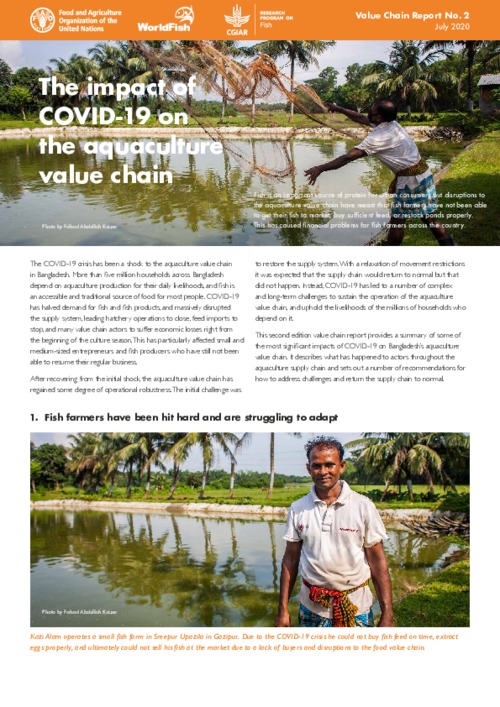The impact of COVID-19 on the aquaculture value chain
Abstract
The COVID-19 crisis has been a shock to the aquaculture value chain in Bangladesh. More than five million households across Bangladesh depend on aquaculture production for their daily livelihoods, and fish is an accessible and traditional source of food for most people. COVID-19 has halved demand for fish and fish products, and massively disrupted the supply system, leading hatchery operations to close, feed imports to stop, and many value chain actors to suffer economic losses right from the beginning of the culture season. This has particularly affected small and medium-sized entrepreneurs and fish producers who have still not been able to resume their regular business. After recovering from the initial shock, the aquaculture value chain has regained some degree of operational robustness. The initial challenge was to restore the supply system. With a relaxation of movement restrictions it was expected that the supply chain would return to normal but that did not happen. Instead, COVID-19 has led to a number of complex and long-term challenges to sustain the operation of the aquaculture value chain, and uphold the livelihoods of the millions of households who depend on it. This second edition value chain report provides a summary of some of the most significant impacts of COVID-19 on Bangladesh’s aquaculture value chain. It describes what has happened to actors throughout the aquaculture supply chain and sets out a number of recommendations for how to address challenges and return the supply chain to normal

